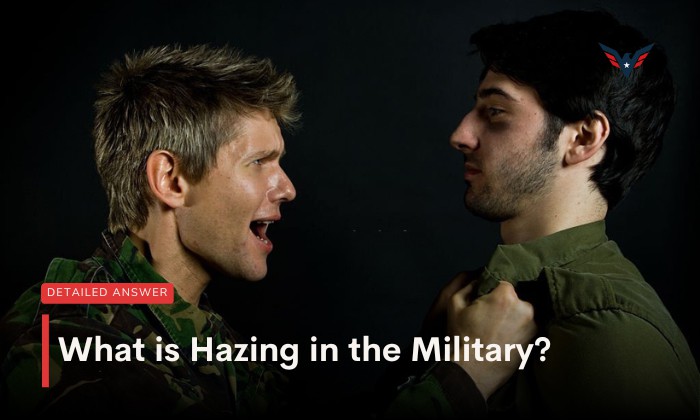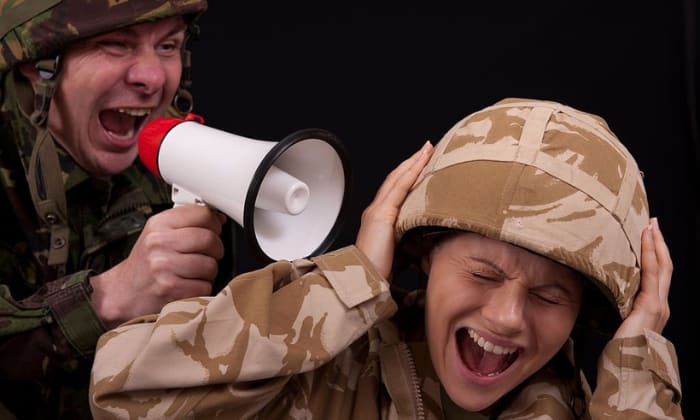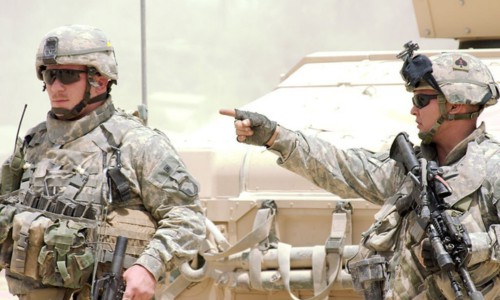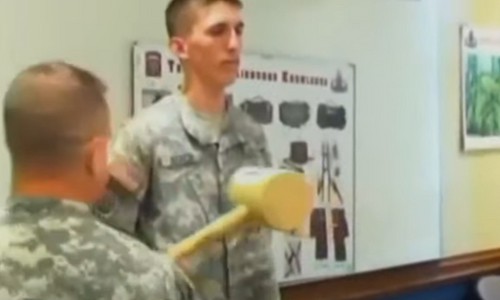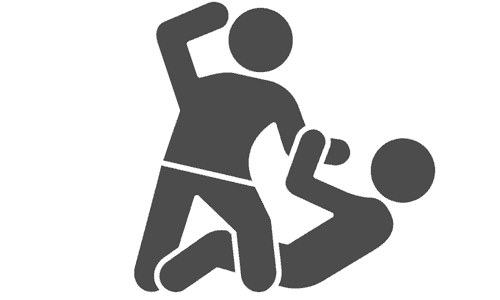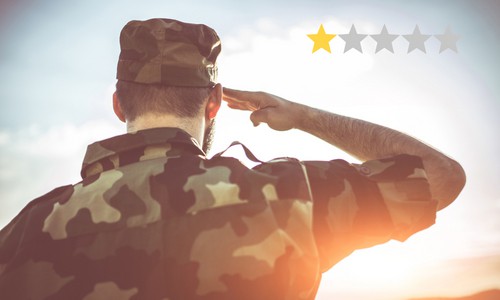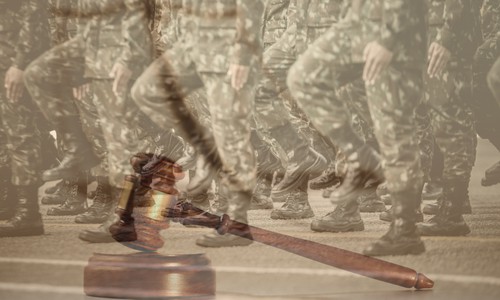Hazing is defined by the Department of Defense (DoD) Instruction 1020.03 as any act in which one or more service members or members of a higher rank, without proper authority, subjects another service member or members of a lower rank to any behavior that is cruel, abusive, humiliating, repressive, or demeaning, whether or not the victims have consented to the act or not.
Among military units, hazing is typically used to uphold dominance structures and (supposedly) to promote cohesion. Hazing incidents have been getting more and more attention in recent years and for good reason.
This article aims to shed light on the definition of hazing in the military and delve into its implications on individuals and the armed forces as a whole.
Table of Contents
All You Need to Know About Hazing in the Military
1. What is Hazing?
The actual meaning of hazing involves the practice of forcing someone to take part in acts that are embarrassing, degrading, abusive, or dangerous for them.
Hazing is defined by three characteristics: the presence of a group setting, the presence of activities that humiliate, degrade, or endanger the individual, and the absence of the subject’s agreement (though the last one is not necessary for something to be considered hazing).
Hazing in the military refers to acts of cruelty, abuse, humiliation, oppression, belittling, or injury committed by members of the military against other members without proper authority. The act of encouraging or pressuring another person to engage in this behavior is also included in the Army definition of hazing.
Note that physical contact is not the only kind of hazing; verbal and psychological forms exist as well.
2. Examples of Hazing
Military hazing rituals such as initiations, rites of passage, or congratulatory activities that involve the following are examples of hazing:
- hitting or branding a person;
- excessive use of substances;
- encouraging or pressuring other people to take part in activities of this kind against their will.
- verbal harassment or psychological intimidation.
Not Considered as Hazing
Some activities are sanctioned by the chain of command and are not needlessly cruel, abusive, traumatizing, or detrimental. These activities are not considered hazing, and include (but are not limited to) the following:
- Mental and physical challenges that are part of regular training
- Disciplinary measures in the form of reprimands or physical exercises
- Any other endeavors of a similar nature and within army regulation.
3. Causes or Motives of Hazing
Hazing in the military is a complicated problem that is affected by many things. Here are the causes and motives for this form of mistreatment:
1. Establishing Hierarchy and Group Identity
In the military, hazing can be motivated by the need to build or reinforce a feeling of group identification and a strict command structure. It could be viewed as an exercise in gauging one’s loyalty, fortitude, or dedication to the team.
2. Socialization and Bonding
Hazing in the military is sometimes used to integrate recruits into the established culture and strengthen connections amongst soldiers.
3. Tradition and Ritual
Hazing practices may have their origins in age-old military traditions or rituals. Although not sanctioned by the state, such practices may be maintained due to slow cultural changes.
4. Power and Control
Hazing can be used by persons in authority to demonstrate their superiority over their subordinates.
5. Misguided Discipline and Toughening
Hazing incidents may be justified as a means of discipline or toughening in some contexts, such as in physically demanding or high-stress military settings.
The Different Forms of Hazing
Among civilians and in the military, there are various types of hazing, each with its characteristics and outcomes. Hazing, in whatever shape it takes, is harmful to the mental health, self-worth, and morale of those subjected to it.
1. Subtle Hazing
Subtle hazing refers to hazing practices that are tolerated or downplayed, but which still foster an intimidating and even deadly environment. The practice of excluding, mocking, or ridiculing someone, or assigning them meaningless tasks and drills, falls under this heading.
2. Harassment Hazing
This form of hazing encompasses both pervasive mistreatment and targeted violence. Harassment hazing can involve verbal abuse, threats, humiliation, and even discrimination based on a victim’s gender, race, or socioeconomic status.
3. Violent Hazing
Violent hazing is the most severe and potentially dangerous kind of hazing. This involves the use of physical force or other behaviors that place the victim in immediate danger.
These are acts that are more like hazing punishment, such as beatings, burning, or involuntary participation in potentially dangerous illegal activities. Physical and psychological harm, and even death, can arise from this severe hazing.
Consequences of Hazing
There have been reports of hazing inside the military despite the presence of regulations and programs designed to prevent it. The USMC hazing culture is common knowledge and even emerged as the branch where hazing is most prevalent.
There have been military hazing stories that came out over the decades that resulted in the development of policies about hazing.
But what are the consequences of hazing? Whether civilian or military, there are three perspectives on this issue, including:
1. For the Person Being Hazed
- Stress disorders like post-traumatic stress are a result of trauma brought on by hazing bullying, harassment, and assault
- Less drive and energy for school or work
- Isolation from friends and family
- Anxiety and depression
- Substance abuse
- Eating disorder
- Mistrust and loss of respect towards the armed forces
2. For the One Doing the Hazing
- Administrative or disciplinary action, up to and including discharge, may be taken against the hazer.
- Hazing, assault, and other criminal offenses
- Legal responsibility, such as reimbursement for treatment and compensation for mental anguish and physical agony
3. For the Organization Where Hazing Takes Place
- Damage to reputation
- Lowered morale
- Legal responsibility for compensation in the event of death or injury to a person or damage to their property
- The risk of losing financial support
Military Regulations and Prevention Measures
The military takes hazing very seriously, which is why they have rules and programs in place to stop it.
1. Regulations
- Uniform Code of Military Justice (UCMJ): Hazing is subject to UCMJ articles 93 and 128 on cruelty, maltreatment, and assault. Punishment includes discharge and confinement.
- Department of Defense Hazing Report: This hazing policy report provides definitions as well as processes for preventing incidents of hazing and responding to those that do occur.
- Service-specific regulations: Every branch of the armed forces has its own set of rules and regulations regarding hazing. One example is the MCO 1700.28B order against Marine Corps hazing.
2. Prevention Measures
- Education and awareness: Service members receive hazing education and awareness training from the military. Hazing is defined, the effects of the act are explained, and participants are taught how to respond to and prevent hazing.
- Reporting mechanisms: The military has set up systems for reporting hazing instances. These systems permit anonymous reporting and guarantee a full investigation of all allegations.
- Zero tolerance: In the military, hazing is not tolerated under any circumstances. This means that there will be consequences for any hazing incidence, no matter how small.
- Creating a culture of respect: The military strives to establish an environment where hazing is not allowed and where mutual respect is the norm. Leaders must be taught to foster an atmosphere of unity and those in charge must be held responsible for any hazing that occurs under their watch.
- Providing support for victims: The military is also helping hazing survivors. Provided services consist of nonclinical advocacy, medical, and legal aid.
Conclusion
Knowing what is hazing in the military and that it exists won’t suffice. Learning how or why it happens and the consequences is equally important for us to understand that hazing shouldn’t be normalized.
The good news is that the military is dedicated to both avoiding hazing and offering help to those who have been victims of it. This shows that the armed forces are making efforts to cultivate a culture that is more considerate of its soldiers’ needs and more welcoming of their contributions.

I am Everett Bledsoe, taking on the responsibility of content producer for The Soldiers Project. My purpose in this project is to give honest reviews on the gear utilized and tested over time. Of course, you cannot go wrong when checking out our package of information and guide, too, as they come from reliable sources and years of experience.

